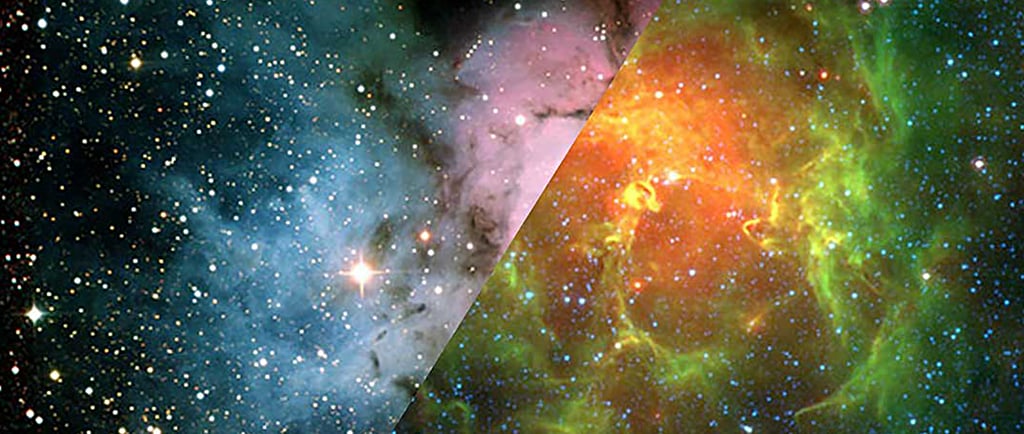M20: The Exquisite Trifid Nebula


Introduction to the Trifid Nebula
The Trifid Nebula, designated as M20, is a spectacular star-forming region located approximately 9,000 light-years away from Earth. This celestial wonder is situated within the constellation Sagittarius and is renowned for its striking appearance characterized by three intersecting regions of interstellar dust. These dust lanes play a crucial role in the nebula's formation, serving as the birthplace for new stars and offering a captivating visual treat for astronomers and stargazers alike.
Characteristics of the Trifid Nebula
M20 is classified as a combination of an emission nebula, reflection nebula, and dark nebula. The emission region glows brightly due to the ionization of gas, mainly hydrogen, by the young, hot stars that have recently formed within its confines. The surrounding reflection area reflects light from nearby stars, giving it a bluish hue. In contrast, the darker regions contain dense clouds of dust, which obscure background stars. This unique combination makes M20 an extraordinary object of study in the field of astronomical research.
The Importance of M20 in Astronomy
As one of the most studied nebulae, the Trifid Nebula provides valuable insights into the processes of star formation and evolution. Observations of M20 have allowed scientists to understand better the dynamics of gas and dust interaction in cosmic environments. Furthermore, its impressive structure has made it a popular target for both amateur and professional astronomers. Notable images taken by telescopes such as the Hubble Space Telescope showcase the sheer magnificence of this nebula, illustrating intricate details of its formation, including the birth of new stars.
In summary, M20, the Trifid Nebula, is a hallmark of star formation in our galaxy, situated in the constellation Sagittarius. Its blend of emission, reflection, and dark nebulae creates a vivid narrative of cosmic activity that continues to intrigue and inspire those who turn their telescopes toward this mesmerizing region of space. As research progresses, the ongoing study of M20 will undoubtedly yield further revelations about the complexities of star formation and the evolution of such remarkable astronomical phenomena.
